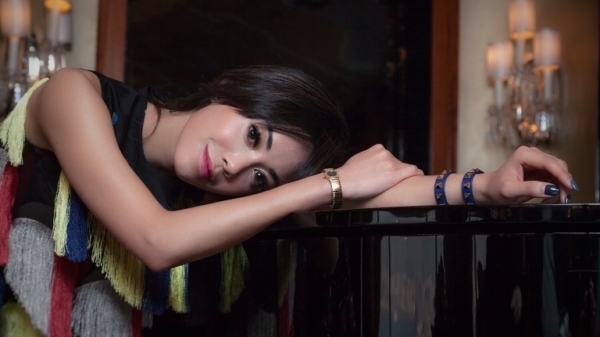
Yen Kuok gets candid on fashion and identity (Part II)
In an online exclusive for Gafencu magazine, Robert Kuok’s youngest daughter talks about giving up her Malaysian passport and fashion inspirations. Gafencu sits down for an exclusive interview with the sprightly fashionpreneur.

In part two of our exclusive digital-only edition Q&A with Yen Kuok, we get up close and personal with the founder of second-hand luxury business Guiltless, who considers herself full Hong Kongese. If you missed the first part, read all about it here.
Would you say that the tag of ‘Robert Kuok’s daughter’ has been a heavy presence following you around?
Growing up, it was definitely not something I was proud of. At school I was a good student, so I was picked to join interschool organisations. I remember we would go to meetings and afterwards my driver would come pick me up, but obviously it would be awkward if everyone’s taking the MTR. They’d be like, ‘How are you getting back?’ to which I would say, ‘Oh, I’m walking to the bus stop.’ ‘Which bus stop?’ ‘Oh I don’t remember the name, somewhere down that road’ – I would try to cover it up.
If I had been sent to an international school like my older siblings, I probably would have been very different, but my parents decided to send me to Diocesan Girls’ School – one of the most academically competitive local schools in town. The environment was cutthroat, pushing me to prioritise doing well in my studies. I was much more chilled and less driven before going to DGS as a kid!
Your dad being Malaysian Chinese, would you consider yourself Hong Kongese?
I consider myself one hundred percent Hong Kongese. I gave up my Malaysian passport – I don’t speak the language, don’t have any friends there, rarely go there. I might as well call myself Japanese ‘cause I go to Tokyo more often than KL!

You would never catch me dead in something like Céline or Haider Ackermann, I’m not going for that aesthetic. I have been in this maximalist phase for the past few years versus minimalism.
What do you like to do in your free time?
I had a really horrible break up a year and a half ago, and it wrecked my skin. I’ve gone through really tough periods before, but that was the only time my skin was affected so dramatically by emotional stress. I broke out had rashes everywhere – it was horrible. I didn’t leave the house, I was crying everyday… I finally said, ‘I need to fix my life. Let me start with my skin.’
I began looking into skincare, going deep from ingredients to ‘What is the best kind of exfoliator?’ or ‘What’s the difference between an apricot shell scrub and a walnut shell scrub??’ [Laughs]
When I set my heart on something I go all in, so ever since then I’ve become all my friends’ go-to person whenever they have skin problems or want recommendations. I’m always the first to know about beauty gadgets, home lasers, nano-current devices, LED facial machines… That’s what I do in my free time – I read beauty blogs to research on skincare!

Let’s talk about fashion, since you’ve taken the deep dive into doing business in the industry ever since. Who are your favourite icons and go-to designers?
You would never catch me dead in something like Céline or Haider Ackermann, I’m not going for that aesthetic. I’m all about Erdem, Nanette Lepore, and of course the Dolce & Gabbanas, the Cavallis, the Versaces…I have been in this maximalist phase for the past few years versus minimalism.
There’s a fine line between what I mentioned and being overdone or tacky, sure, but I can’t help but be drawn to complexity and pattern. Etro is one example, for the diversity of textures, and then there’s Iris van Herpen who does 3D printing, which is all about the intricacy. Check out some of her runway pieces, they’re really beautiful. I remember she came out with this innovative skeleton dress which visualized the inside of the body outside [Editor’s Note: The piece was later acquired by the Metropolitan Museum of Art].

Today it’s women’s fashion, lifestyle goods and gadgets; tomorrow you mentioned wanting to expand into men’s and children’s wear. What’s next – with the recent success of your pop up, do you plan to open a physical shop eventually?
We had never entertained the idea of opening a permanent physical shop because looking at the likes of Net-a-Porter, staying online has been one of the reasons they’ve been able to maintain a successful international business model with an image extending to all corners of the world. Once you have a physical shop, you become localised to a certain place. But this pop-up has been a pleasant surprise, so I wouldn’t completely rule it out, but right now I’d rather focus on online.
Thank you.
Catch our main interview with Yen Kuok on Gafencu magazine’s March 2018 print issue coming out in newsstands on the 1st of March 2018!
Interview by: Julienne C. Raboca







